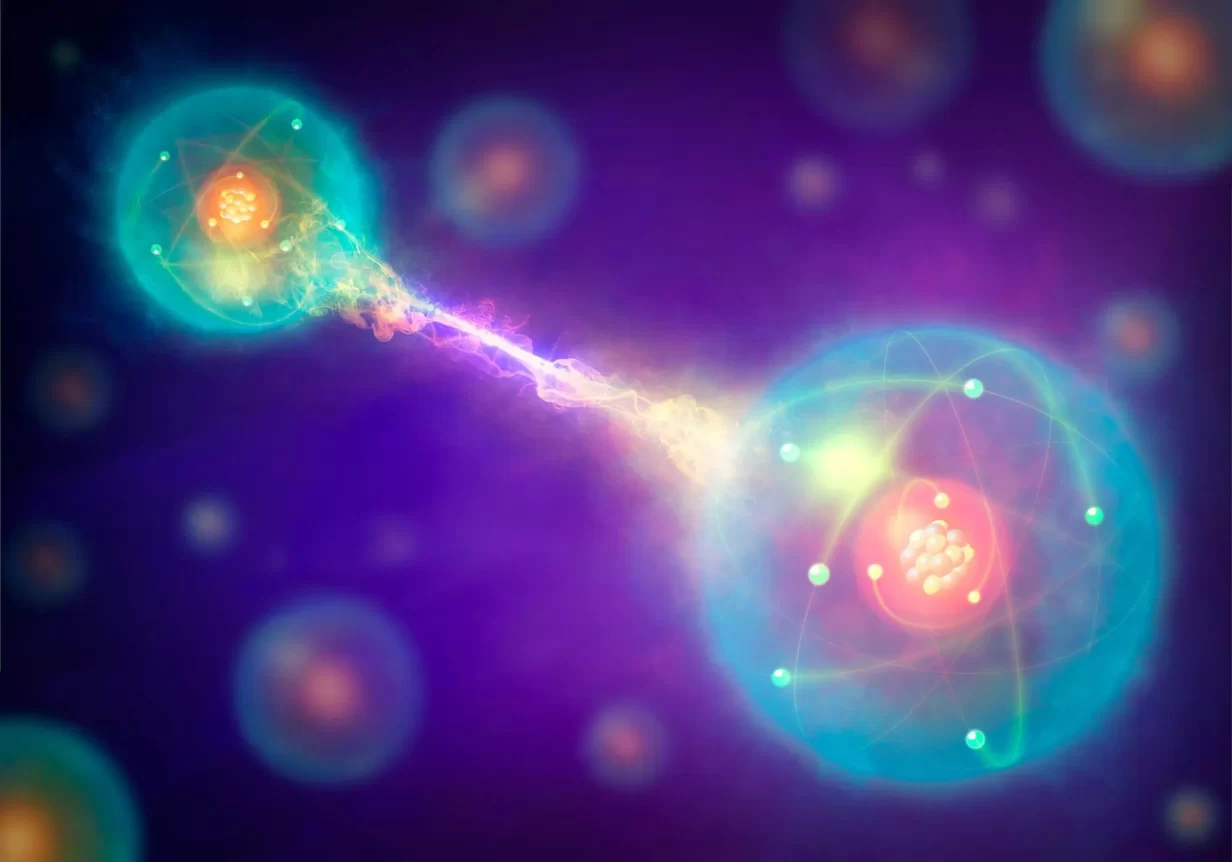
Quantum Random Number Generator Based on Americium Decay and a Geiger Counter
Introduction
Modern technologies – from cryptography to artificial intelligence modeling – increasingly rely on truly random numbers.
However, most random number generators built into computers actually produce pseudorandom sequences.
These are deterministic algorithms: if you start them with the same initial seed, they always generate the same sequence.
True randomness does not come from code – it comes from nature itself.
One of the most accessible ways to obtain quantum randomness in a laboratory or even a home experiment is by using the radioactive decay of americium-241 (Am-241) together with a Geiger counter.
Why Radioactive Decay Is a Quantum Process
To understand why radioactive decay is truly quantum, we must look at the fundamental nature of the phenomenon.
Each atom of americium (or any radioactive element) exists in a metastable nuclear state – it can decay, but exactly when it will happen is impossible to predict.
The reason lies in the core principles of quantum mechanics.
1. Quantum Uncertainty
According to Heisenberg’s uncertainty principle, it is impossible to precisely determine all parameters of a quantum system at once – such as its energy and the lifetime of an excited state.
This means that the moment of decay is not governed by any deterministic law.
We can calculate only the probability that a nucleus will decay within a given time interval – but not the exact moment of decay.
If nuclear decay followed classical laws, each atom would “age” predictably, like a mechanical clock – half of the atoms would decay after exactly one half-life period.
But in reality, each nucleus “decides” to decay completely randomly. The law of half-life describes only statistical behavior over large numbers of atoms.
2. Alpha-Particle Tunneling
Americium-241 is an alpha emitter. During decay, it releases an alpha particle – a helium nucleus.
Classically, this particle should not be able to escape, because it is trapped by a strong Coulomb barrier inside the nucleus.
However, quantum mechanics allows the alpha particle to have a finite probability of tunneling through this barrier, even without sufficient energy to overcome it.
The very act of decay is therefore a quantum tunneling event – a purely probabilistic process with no classical analogue.
Each tunneling event occurs spontaneously and unpredictably.
Building a QRNG Using Americium and a Geiger Counter
Constructing a Quantum Random Number Generator (QRNG) based on americium decay is relatively simple and educational.
You only need a few components:
- Americium-241 source
- Geiger–Müller counter (GM tube)
- Microcontroller or computer
How it works
Each Geiger counter pulse corresponds to a single quantum decay event.
The time intervals between pulses follow an exponential distribution, which is a hallmark of random processes with a constant decay probability per unit time.
By measuring the time between successive pulses and recording, for example, the least significant bit of the timing value, you obtain pure quantum randomness.
No software algorithm can predict or reproduce this sequence.
Why It’s Not Pseudorandom
Standard pseudorandom number generators (PRNGs) are based on deterministic formulas.
Even though their outputs look random, the same seed always produces the same sequence.
A quantum random generator is fundamentally different:
- There are no deterministic causes for each decay event.
- No one can predict when the next event will occur, even with perfect knowledge of the system.
- The randomness originates from the fundamental indeterminacy of nature, not from algorithmic limitations.
This is why an americium-based QRNG provides true physical entropy.
Applications and Advantages
- Cryptography:
Truly random keys make encryption maximally secure – even against quantum computers. - Scientific simulations:
Physical randomness improves the accuracy of simulations in chaotic systems, from weather models to molecular biology. - Gaming and AI:
Genuine randomness adds unpredictability and realism to algorithms and decision-making systems. - Fundamental physics experiments:
QRNGs are used in Bell test experiments to confirm quantum nonlocality and rule out hidden-variable theories.
Practical Considerations
Americium-241 in small quantities is very weak (about 0.3 microcurie), safety precautions should still be observed:
- Do not open or damage the protective housing.
- Handle the source with care and avoid direct contact.
- Work in a well-ventilated area and store the sample in a sealed container.
A standard Geiger–Müller tube (such as the SBM-20) connected to a microcontroller is sufficient to detect alpha particles and record the timing between pulses.
Conclusion
The radioactive decay of americium is one of the most vivid demonstrations of quantum randomness in action.
Each decay event results from the tunneling of an alpha particle through a potential barrier — an inherently unpredictable quantum process.
Using a Geiger counter and a simple interface, one can build a quantum random number generator that draws entropy directly from the laws of physics themselves.
An americium-based QRNG is not just a piece of hardware – it is a window into the deep structure of reality, where randomness is not an illusion but a fundamental feature of the universe.
